 |
 |
 |
| |
DTG-Based Regimens Are Active in INI-Naive
Patients With a History of NRTI Resistance
|
| |
| |
Reported by Jules Levin
20th International AIDS Conference, July 20-25, 2014, Melbourne
Jim Demarest,1 Mark Underwood,2 Marty St Clair,2
David Dorey,3 Steve Almond,3 Robert Cuffe,4
Dannae Brown,5 Garrett Nichols6
1ViiV Healthcare, Global R&D, Research Triangle Park, NC, USA; 2GlaxoSmithKline, Clinical Virology, Research Triangle Park, NC, USA; 3GlaxoSmithKline, Clinical Statistics, Mississauga, Canada; 4ViiV Healthcare, Statistics, London, United Kingdom;
5ViiV Healthcare, Medical Affairs, Abbotsford, Australia; 6GlaxoSmithKline, Infectious Disease R&D, Research Triangle Park, NC, USA

------------------------------------
Program Abstract
Background: Dolutegravir (DTG) has exhibited potent antiviral efficacy in Phase 3 studies of more than n=1800 integrase inhibitor(INI)-naïve patients. These international studies evaluated the activity of DTG-based regimens in the context of different HIV-1 subtypes and treatment history.
Methods: Virologic outcome of patients enrolled in the SPRING-2, SINGLE, FLAMINGO, and SAILING studies of DTG-based regimens was evaluated. Screening PI, NNRTI, and NRTI resistance was performed for patients enrolling in SAILING. In all studies, genotypic and phenotypic resistance testing was performed with the Baseline and time of failure samples for patients experiencing protocol defined virologic failure (PDVF).
Results: In treatment naïve studies where DTG was given with 2NRTIs, no subject developed resistance to either DTG or the background therapy through 96 weeks (SPRING-2, SINGLE) or 48 weeks (FLAMINGO). In patients with a history of at least 2 class-resistance but INI-naïve (SAILING), those receiving DTG plus 2NRTIs over 48 weeks did not experience PDVF (0/32), even when both NRTIs were not fully active. In contrast, several subjects receiving RAL plus 1-2NRTIs experienced PDVF (7/32, 22%). In SAILING subjects for whom the background regimen included 3TC/FTC in the presence of mutation M184V, 0/13 had failure with DTG + a second NRTI. For 10 of these subjects, the second NRTI was active (by phenotype); for 3 of these subjects, the second NRTI was used in the presence of 2 or more thymidine-analog mutations. For RAL subjects who received 3TC/FTC plus a second NRTI in the presence of M184V, 4/12 (33%) had PDVF; in all of these cases the second NRTI was active by phenotype.
Conclusions: DTG-based regimens showed substantial and durable antiviral activity in INI-naïve patients. No treatment-naïve subject receiving DTG+2NRTIs developed resistance to either DTG or the background therapy through 96 or 48 weeks. In the SAILING study of patients failing therapy with at least 2-class resistance, there was no evidence of an increased risk of virologic failure for subjects receiving DTG + 2 NRTIs, even in the presence of NRTI resistance. Further studies and longer follow-up are planned to confirm these findings.
--------------------------------
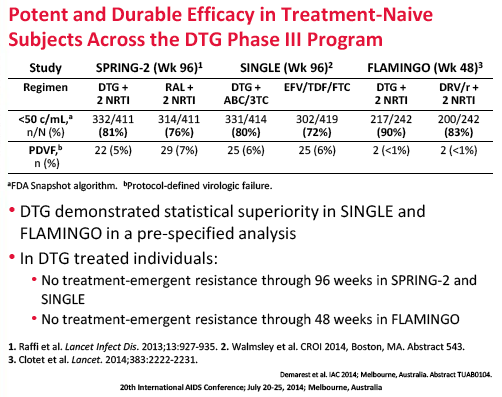
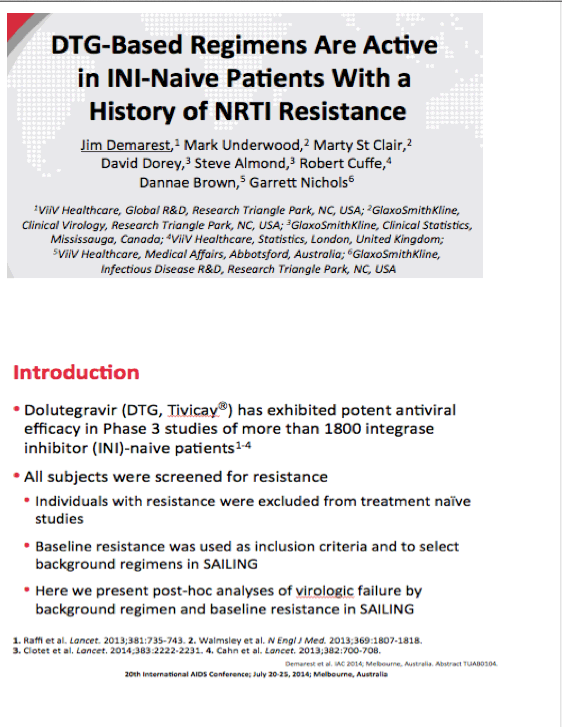
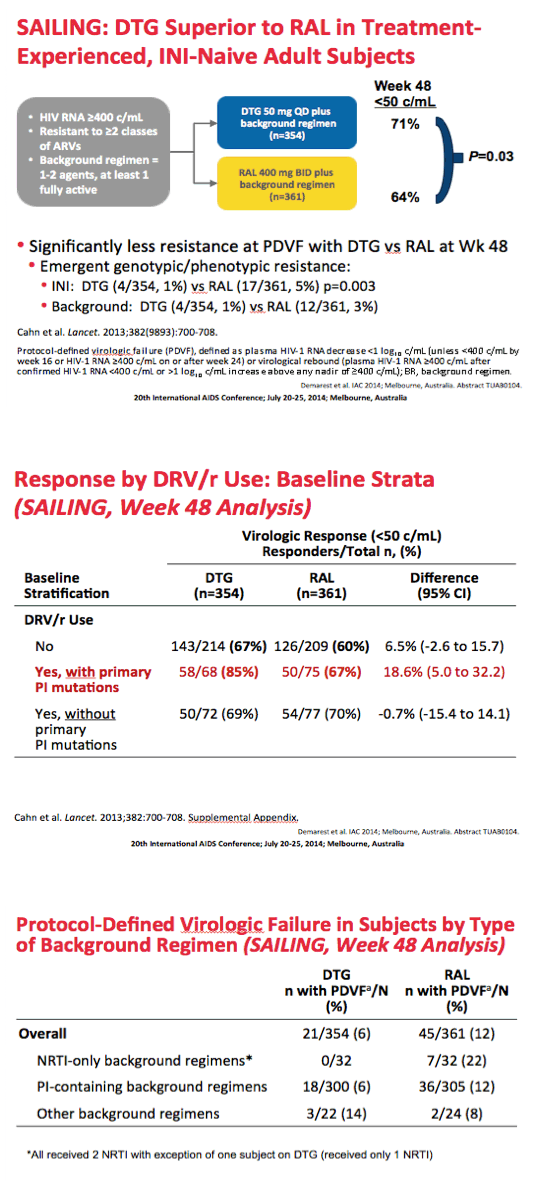
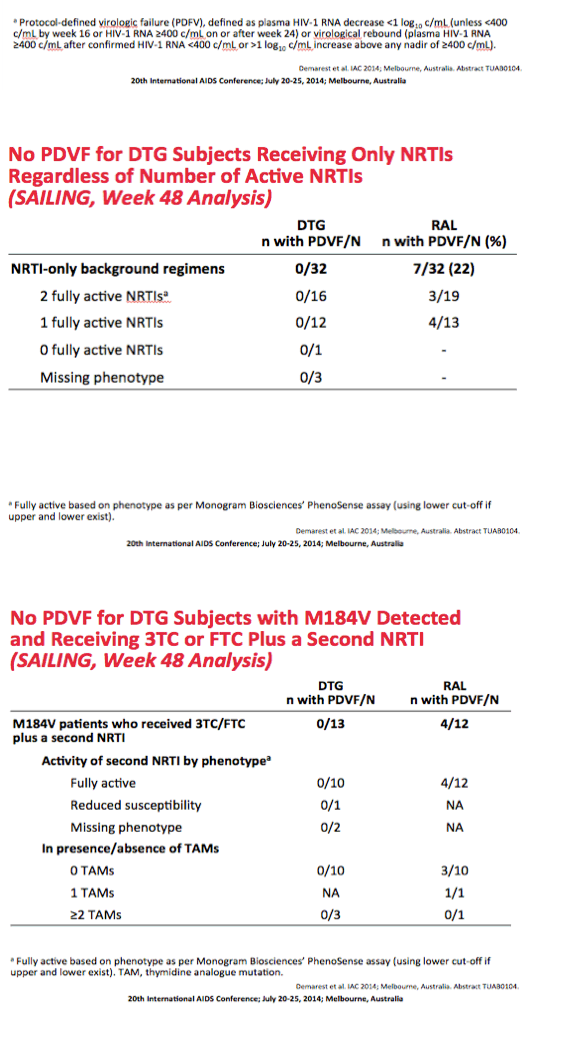
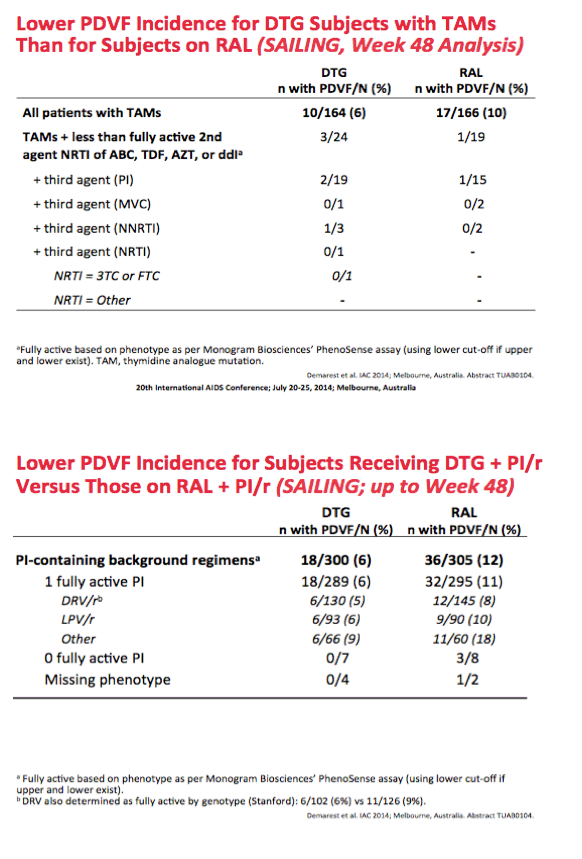
|
| |
|
 |
 |
|
|